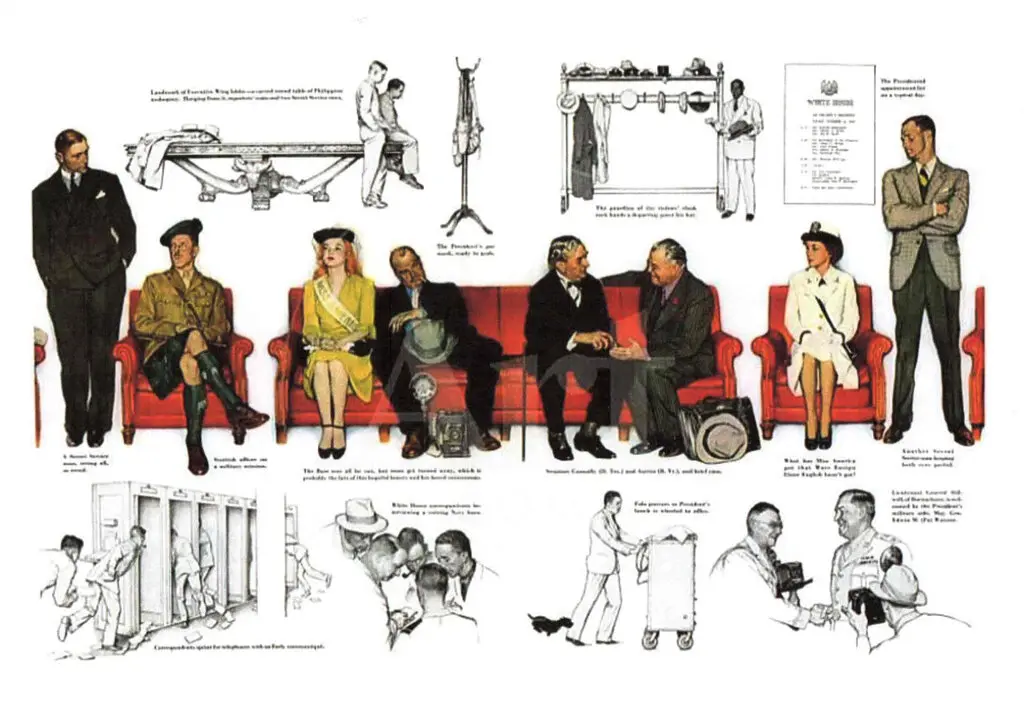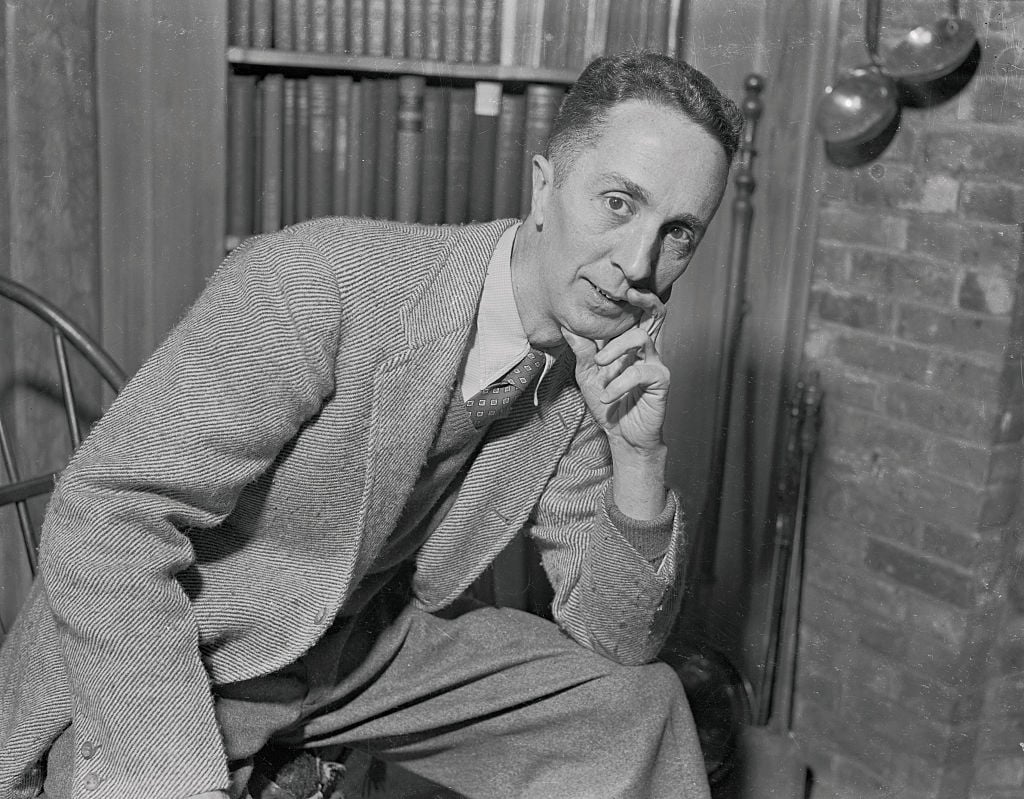Was the White House used to steal a series of Norman Rockwell illustrations?
That’s the central contention of a knotty new lawsuit, which alleges that the descendants of Franklin D. Roosevelt’s longtime press secretary lent a series of four Rockwells to the White House in an effort to conceal ownership of the artworks, according to a report from the Wall Street Journal. (The White House has not been accused of any wrongdoing.)
Rockwell created the sketches and watercolors upon visiting the presidential home in 1943. The series, called “You Want to See the President,” depicts various Americans—soldiers, senators, a Miss America pageant winner—waiting in the executive wing for some face time with Roosevelt. They jointly ran in the November 13, 1943 issue of The Saturday Evening Post.
After finishing the illustrations, the artist gifted them to FDR’s press secretary, Stephen Early—who also appeared in one of the sketches.
For decades—and seven presidential administrations—Rockwell’s pieces hung in the White House. But that was news to the heirs of the press secretary’s son, Thomas Early, who spotted the artworks on the wall of a West Wing hallway while watching a 2017 television interview with then-President Donald Trump.
Suspecting that his nephew, William Elam III, had lent the illustrations without the family’s permission, Early requested that they be taken down from the White House walls. When Early died in 2020, the illustrations where still on view at the residence.
It wasn’t until last year that the White House quietly removed the Rockwells, replacing them with several photographic portraits of President Joe Biden, Politico reported at the time. But, once taken down, the “You Want to See the President” illustrations were returned to Elam, not the direct relatives of Early.

An illustration from Norman Rockwell’s 1943 series, You Want to See the President. Courtesy of the U.S. District Court for Eastern Virginia.
Now, a contentious legal debate over ownership of the pieces has turned the various family members against each other.
In February, Elam filed a complaint in Virginia District Court alleging that he was entitled to sole ownership of the Rockwell works. The filing explained that Stephen Early, the former press secretary, gifted them to his daughter, Helen Early Elam, in 1949, and that she in turn gave them to her son, William Elam III, who lent them to the White House in July 1978.
Elam III is asking the court to award him ownership of the illustrations for good.
But this week, Thomas Early’s sister and sons filed a counterclaim against Elam III, in which they argued that Helen Elam only owned a one-third interest in the Rockwell sketches and thus could not legally pass them on to her son.
The counterclaim further alleged that “William Elam took the Rockwells to the White House to conceal his removal of the artwork from his grandmother’s house and to hide the Rockwells for a significant time period to ‘launder’ or ‘wash’ the ownership of artwork, in the effort to obtain sole ownership.”
Early’s heirs are similarly seeking ownership of the Rockwell artworks, as well as $350,000 in punitive damages.
It’s unclear how Early’s heirs arrived at that figure, though it does not necessarily reflect the value of the artworks.
Rockwell’s paintings have consistently fetched seven and eight figures at auction in recent years, according to Artnet’s Price Database, but works on paper haven’t been valued as highly by the market. The record price for one of the artist’s paper pieces is $854,500 for a study for his 1964 oil, The Problem We All Live With, depicting Ruby Bridges walking into her newly desegregated elementary school, which sold at Sotheby’s in 2010.
Attorneys for Elam III and Early’s heirs did not immediately respond to a request for comment.
More Trending Stories:
Banksy Created His Latest Artwork on a Rundown Farmhouse by the British Seaside—Only to Have It Immediately Destroyed
A German Man Just Learning How to Use a Metal Detector Uncovered a Hoard of Buried Byzantine Jewelry and Silver Coins
The New York Art World Had High Hopes for Black Wall Street Gallery. Allegations Against Its Founder Have Soured Those Dreams
New York’s ‘Hot Dog King’ Has Held Court Outside the Met Museum for Years. Now Fans Are Rallying to Stop the City From Ejecting Him
Sotheby’s Surrealism Sale Fails to Meet Expectations, Pulling in an Under-Estimate $18 Million With Several Blue-Chip Works Going Unsold
In His Upstate New York Studio, Stefan Bondell Paints Day and Night, Fueled by Hudson River Light and Copious Amounts of Sugar
We Spoke to the ‘Anguished’ Barcelona Residents Fighting to Prevent the Completion of Gaudí’s Famed Sagrada Familia
‘All the Beauty and the Bloodshed’ Is a Truly Great Artist Documentary. Here’s What Makes It Work So Well
Who Was Leonardo da Vinci’s Mom, Actually? A Provocative New Book Suggests She Was a Slave From the Caucasus of Central Asia
Kenny Schachter Pays a Mind-Bending Visit to Beeple’s New High-Tech Art Compound (Getting in Plenty of Trouble Along the Way)









